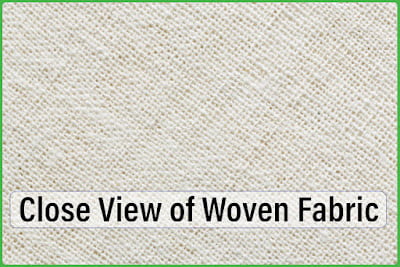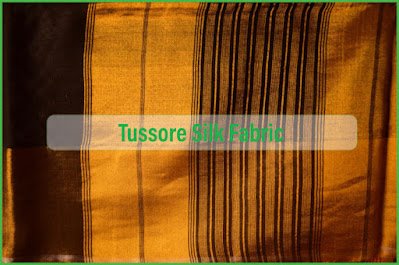What is Woven Fabric: Definition and Meaning
Last updated on October 5th, 2023 at 11:12 pm
Definition of Woven Fabric
In its simple form it consists of two series of threads, warp and weft, interlaced at right angles to each other. The warp threads run the length of the fabric and the weft threads run across the width of the fabric. The edge at each long side of a woven fabric is called the selvedge and it is commonly of a different construction or appearance, to the rest of the fabric because its function is not only to provide a firm neat edge finish to the fabric for the sake of appearance, but also to provide a secure grip for finishing machinery. For this reason, small regular groups of pin-holes can often be seen in a fabric selvedge showing where it was held by the machine pin. Other types of machine use clips which do not mark the selvedges. The section drawings at the side and the bottom of the plan show that warp and weft interlace with each other in a similar manner.

If the threads are closely spaced it can be seen that this form of interlacing gives a very tight structure the alternate interlacing give no room for sideways movement of the threads. The draping properties of such a structure would depend entirely on the flexibility of the fibres and yarns. For example, a square of wire gauze, as used in a laboratory, is formed by interlacing steel wire in plain weave. As a result a fairly rigid piece of fabric is produced this is the intention. The fabric is too rigid to be used for any normal fabric purpose because steel wire is far less flexible than any textile fibre or yarn.
You may also like: Sewing Thread: Definition, Types and End Uses
A fine cotton calico can be made by interlacing cotton yarns in plain weave much more closely than the wire gauze, but because of the softness and flexibility of the cotton, the resulting fabric is quite supple and is flexible enough for many fabric purposes. The toil used by dressmakers for making preliminary models of dresses is often calico of this type.
Woven structures can vary in density and in interlacing, and this can make them differ in appearance and handle, but in their simple forms they represent a very stable material. By this it is meant that unless a woven fabric is deliberately made otherwise (such as in a ‘stretch’ fabric) it does not extend a great deal in warp and weft directions because of the interlacing – which resists an attempt to pull warp or weft straight.
You may also like: What Is Textile Waste | Definition, Meaning and Types
The natural elasticity of the material will produce a reasonable amount of ‘give’ in warp and weft directions. This will vary according to the tightness of the structure and the amount of elasticity in fibre and yarn. The amount of movement is usually small enough to ensure that a piece of woven fabric cut to shape, as a part of a garment is not too easily distorted, but yet in wear it will ‘give’ enough to be comfortable if the garment is cut and styled properly. If tension is exerted diagonally much more movement is obtained because the force is not now directly along a yarn direction but is pulling across both series of threads causing a ‘scissor’ action. This diagonal direction is known as bias.
True bias is an angle of 450, i.e. exactly between warp and weft, and smaller angles of bias can be used if necessary, but the greatest amount of movement is along the true bias line. In using a woven fabric for clothing, due regard must be paid to the grain of the fabric. The grain is represented by warp and weft. If the fabric is true, the warp runs straight lengthwise and the weft runs across the fabric at 900 to the warp. Garments are usually made up so that the warp runs vertically down the garment as it is worn and the weft horizontally across it.




Hi,
I come across your blog through search and found its really great with lots of informative stuff about weaving and braiding wire, i have stored this blog URL for the references purpose. You have really done the great job.
Weaving & Braiding Wires
Really you did the great jobs Thanks for your blog articlesHangzhou Six Dragon Textile Co.,Ltd
I think that you are right with this.
The content diversity on this blog is impressive. So much to learn and absorb!
Your place is valueble for me. Thanks!…